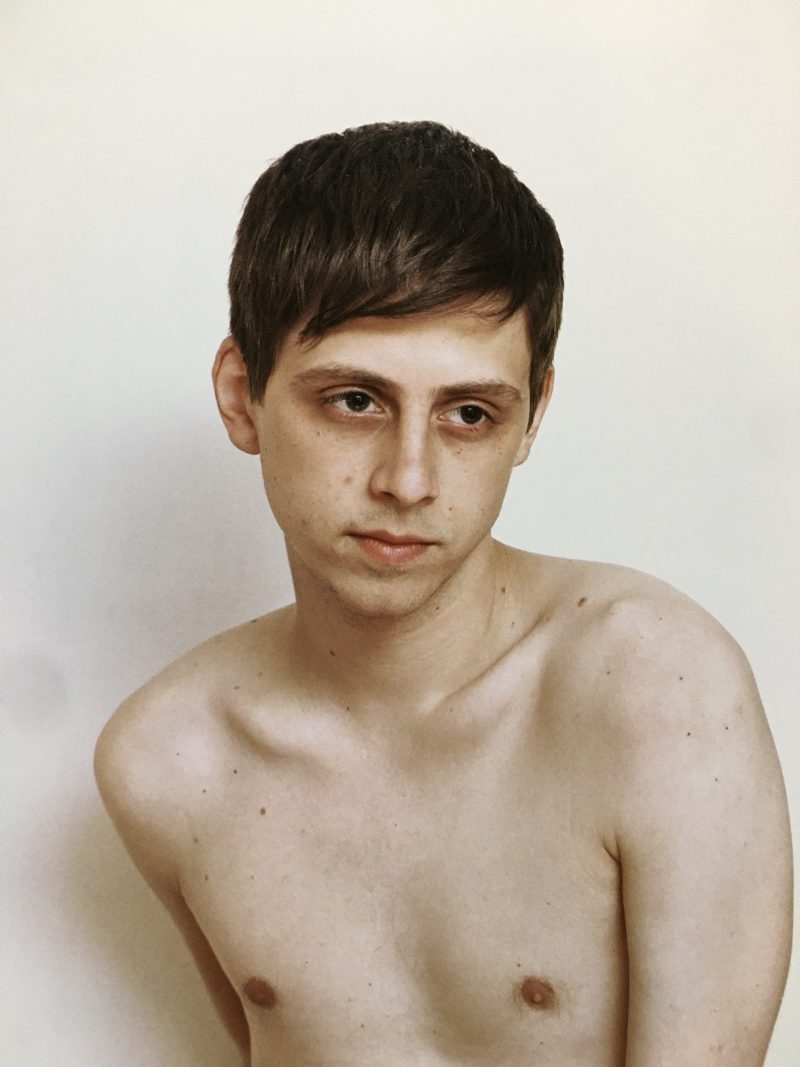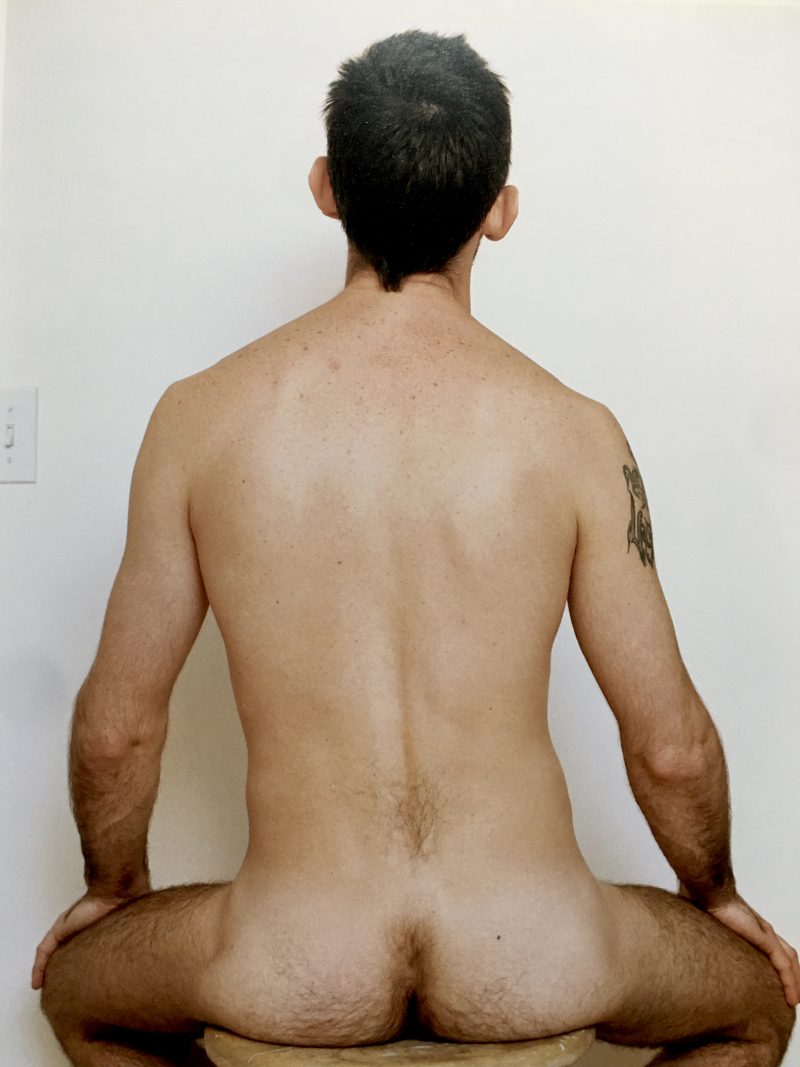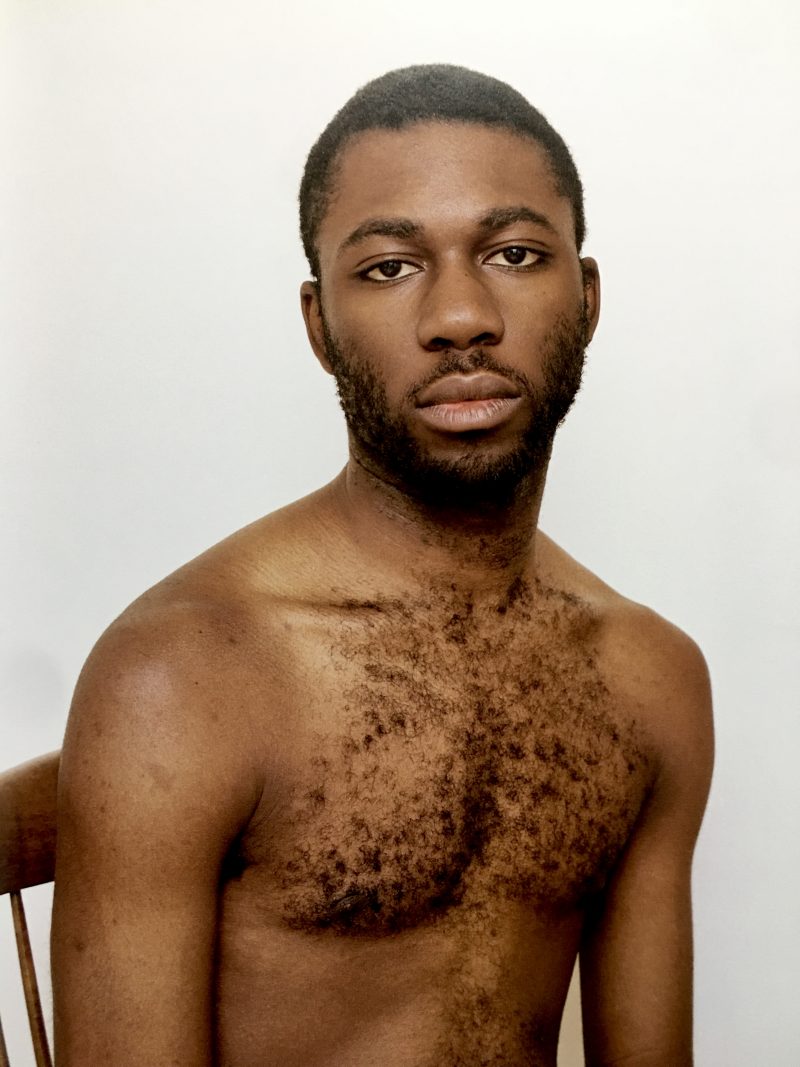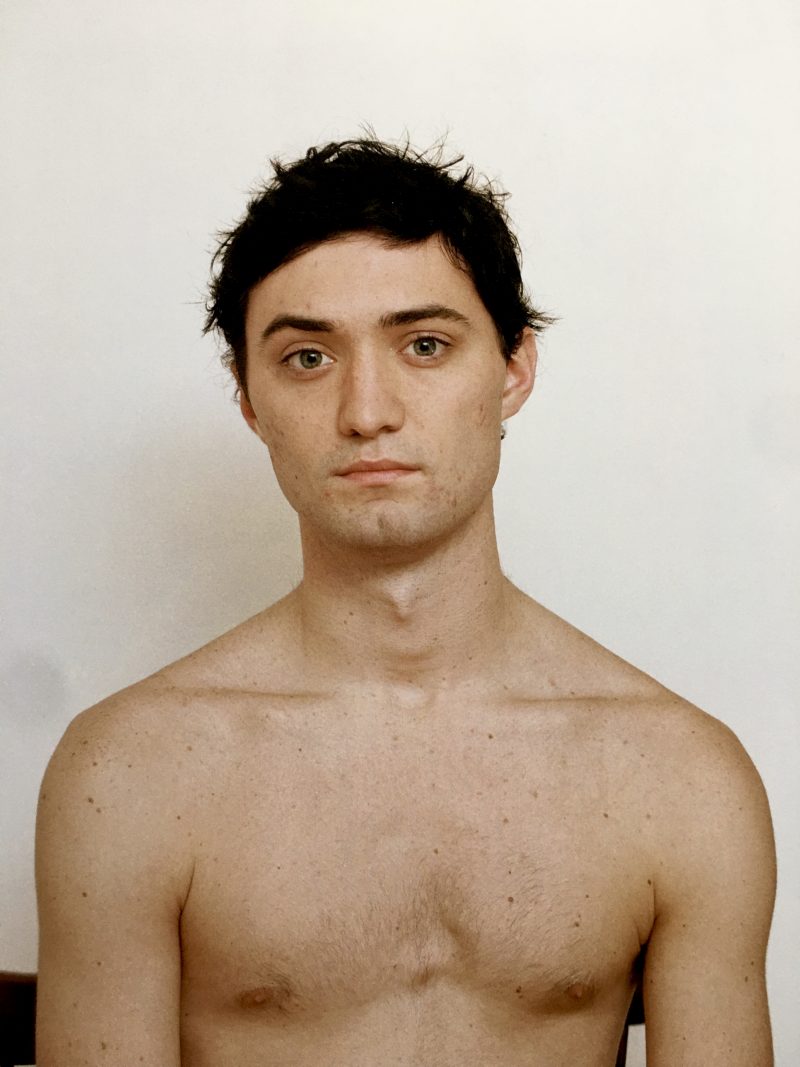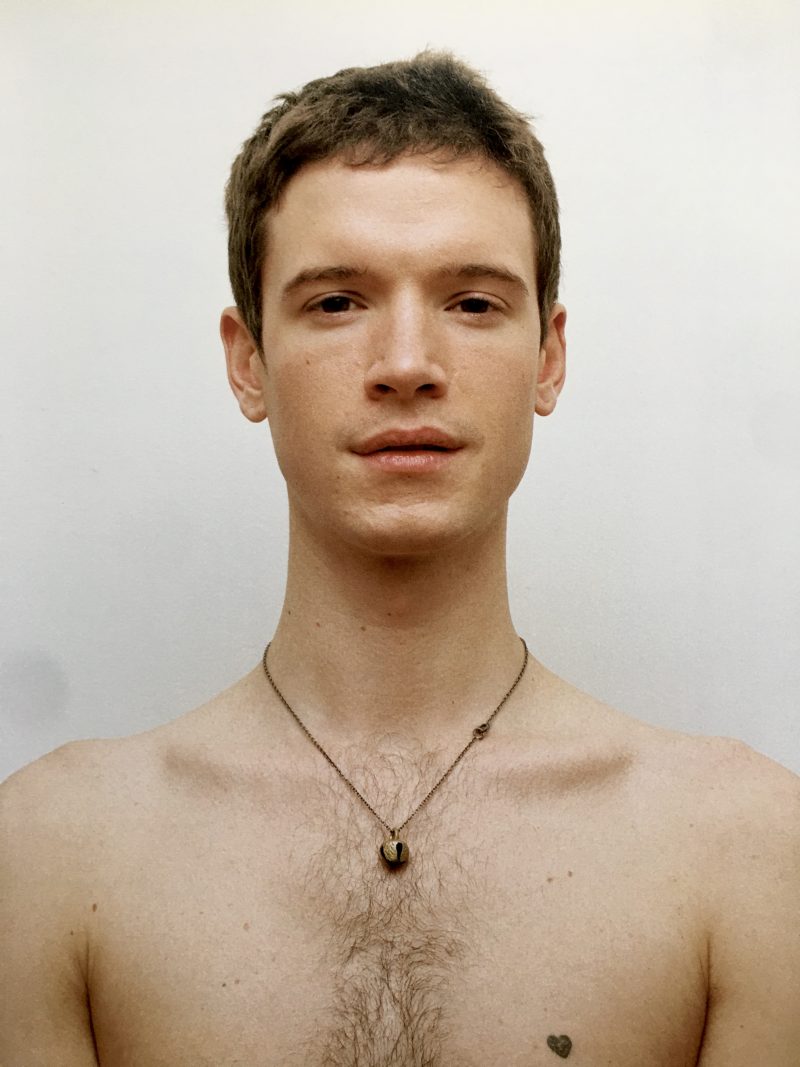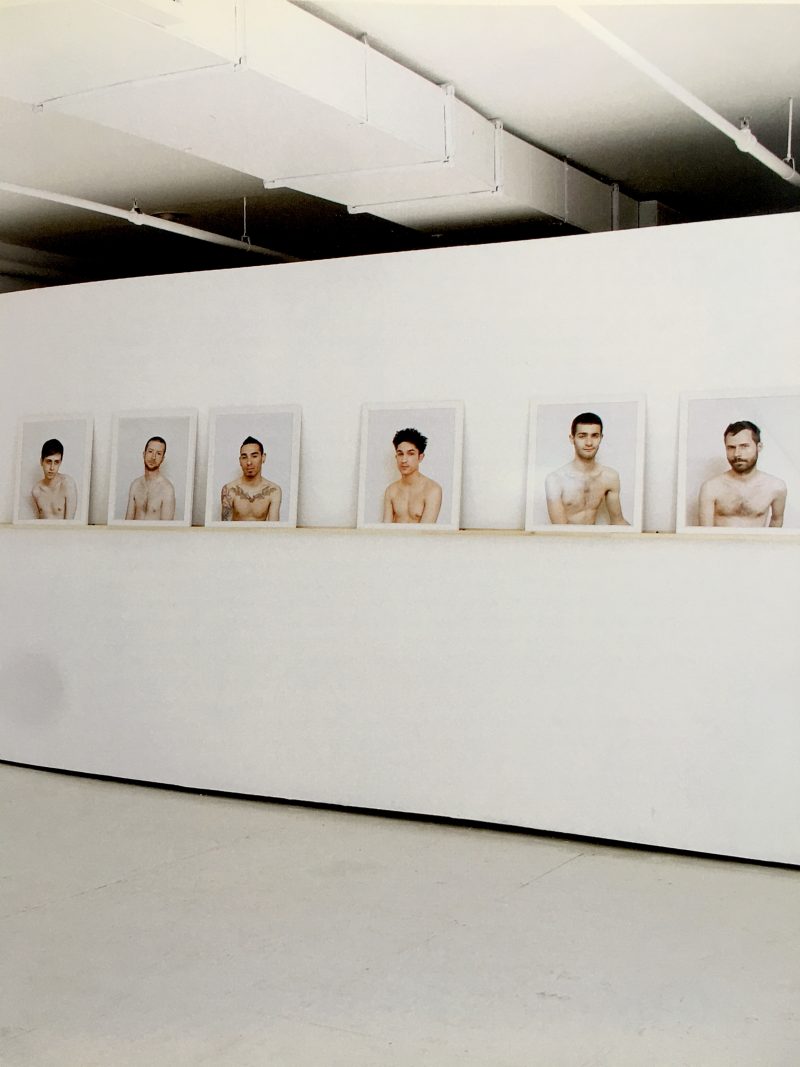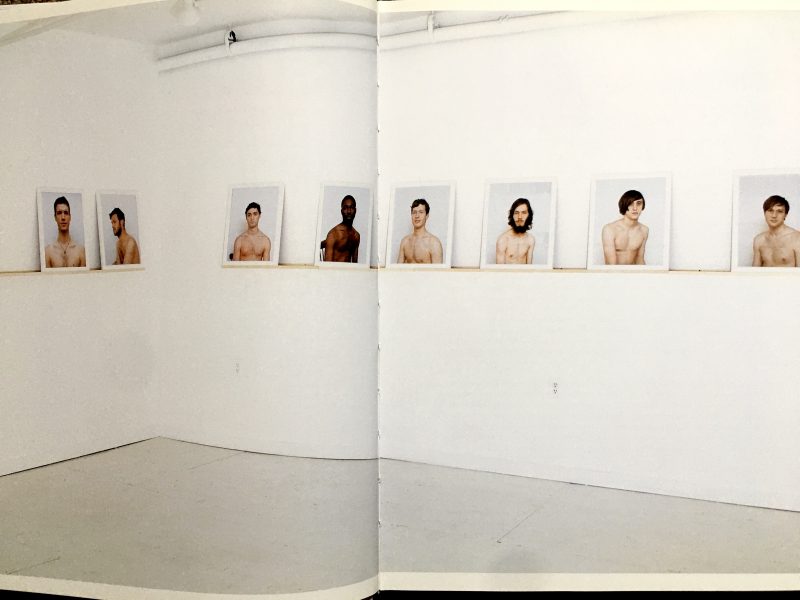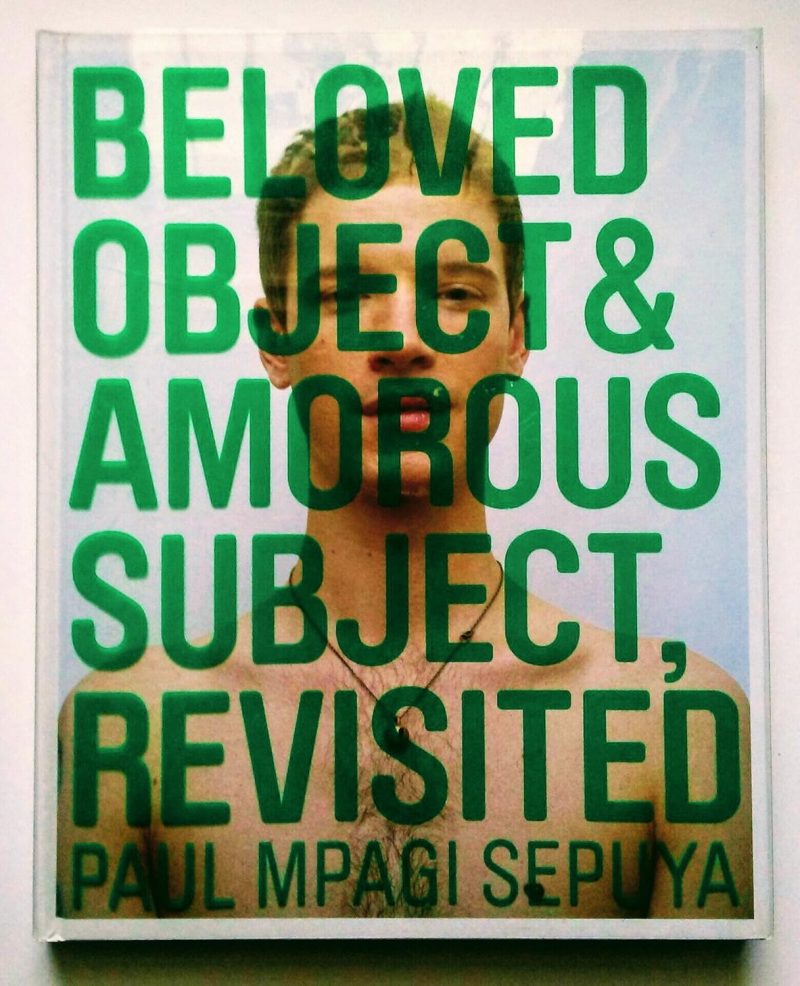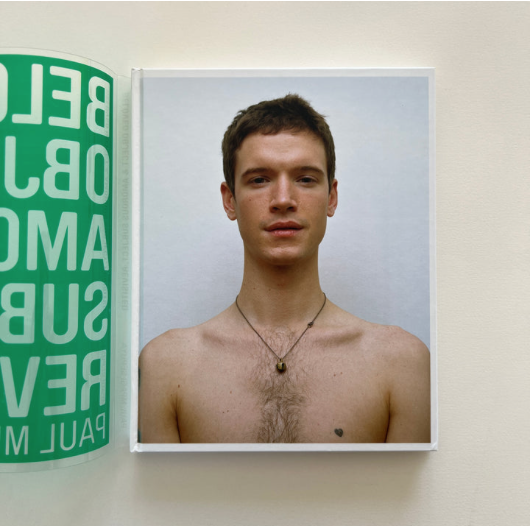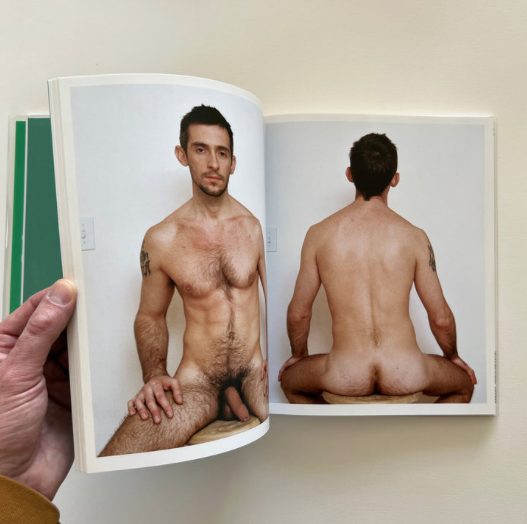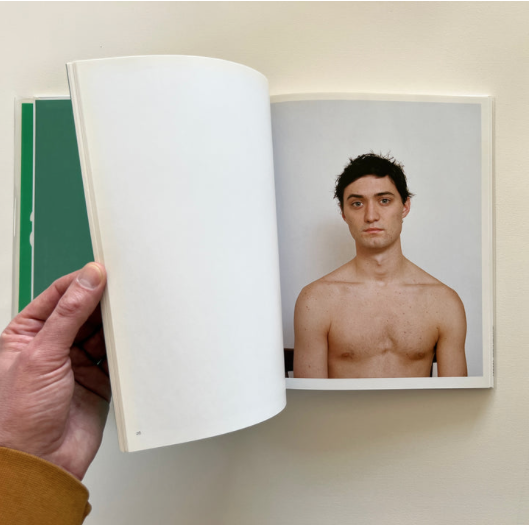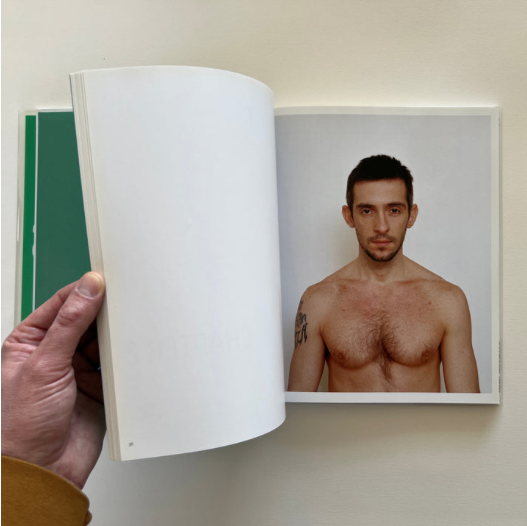SOLD. ‘Beloved Object & Amorous Subject’, Paul Mpagi Sepuya, 2008
“It’s hard to bring a fresh perspective to photographic portraiture, but Paul Mpagi Sepuya proves that sometimes the simplest approach yields the most rewarding results. His book, “Beloved Object & Amorous Subject, Revisited,” (Envoy) is straightforward enough: a series of shirtless young men — Sepuya’s friends, boyfriends and collaborators — pose deadpan against a plain white wall in his bedroom. The images are technically impeccable, but it is the subtle changes in mood and expression that draw us in: who exactly are these guys, and why do we care?” – Armand Limnander, New York Times (April 2008)
‘Beloved Object & Amorous Subject, Revisited‘
by Paul Mpagi Sepuya
New York, NY: Envoy, 2008
Design by Circle & Square, Brooklyn, NY
Edition/Number: 807/1000
Size: 8.25”x10.25” / hardcover
Clear Plastic cover has worn signs / green has discolored.
Appraised & Selling for USD$250-400
SOLD.
Book published in 2008 featuring portraits from 2005-2006 in an edition of 1,000.
112 pages, hardcover, signed by the artist.
Text contributions by Dean Sameshima and David Velasco.
Designed by Carl Williamson, edited by Felix Burrichter.
Description
A series of shirtless young men — Sepuya’s friends, boyfriends and collaborators — pose deadpan against a plain white wall in his bedroom.
The book’s title was inspired by Roland Barthes’ “A Lover’s Discourse: Fragments,” his 1977 impressionistic treatise on desire. Sepuya’s work allows him to explore the subject while categorizing special relationships that have affected him through the years. Seen together, the pictures feel ritualistic in their repetition, but they also offer a voyeuristic frisson: the viewer is left to imagine what exactly transpired between the characters.
Fine Print | ‘Beloved Object & Amorous Subject, Revisited’
BY ARMAND LIMNANDER
APRIL 4, 2008

It’s hard to bring a fresh perspective to photographic portraiture, but Paul Mpagi Sepuya proves that sometimes the simplest approach yields the most rewarding results. His book, “Beloved Object & Amorous Subject, Revisited,” (Envoy) is straightforward enough: a series of shirtless young men — Sepuya’s friends, boyfriends and collaborators — pose deadpan against a plain white wall in his bedroom. The images are technically impeccable, but it is the subtle changes in mood and expression that draw us in: who exactly are these guys, and why do we care?
The book’s title was inspired by Roland Barthes’ “A Lover’s Discourse: Fragments,” his 1977 impressionistic treatise on desire. Sepuya’s work allows him to explore the subject while categorizing special relationships that have affected him through the years. Seen together, the pictures feel ritualistic in their repetition, but they also offer a voyeuristic frisson: the viewer is left to imagine what exactly transpired between the characters. Only Sepuya has the answers, but he’s not interested in revealing them — for him, this is just the beginning of a story that can be developed indefinitely.



